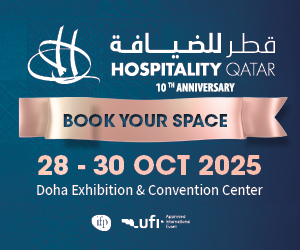Counting on a revival in the tourism sector to help restore vigorous economic growth, Jordan is also looking to promising official data for the first quarter of the year.
Statistics released by the Ministry of Tourism and Antiquities (MTA) show that from January to March 2014, the kingdom attracted 3.1% more individual tourists and 4.7% more group arrivals than over the same period last year. More importantly, tourism revenues for the quarter improved by more than 11% on corresponding figures for 2013, rising to just over $1bn.
The numbers are contributing to a widespread sense that, following years of constrained growth, Jordan’s tourism sector has regained momentum. At 10-12% of GDP, the tourism sector is already one of the kingdom’s most important sources of both employment and foreign currency, and analysts see potential for this to expand in the near future. Observers also point to May’s visit by Pope Francis, which is expected to generate both an instant upsurge in tourism and greater international awareness of the kingdom’s various attractions.
In part, the recovery has been a natural result of changing conditions and perceptions. The global economy, is slowly putting the 2008-09 financial crisis behind it, putting more disposable income in the hands of consumers. Political protests in Jordan have been markedly less disruptive than that elsewhere in the region since 2011. Indeed, even these protests have dwindled in size and intensity, so concerns about domestic stability have receded. Tourists remain wary of the war in neighboring Syria, but despite the challenges of hosting some 600,000 refugees, the kingdom has managed to contain the situation, thanks in part to assistance from friendly governments and multilateral institutions.
“Brand Jordan”
For enthusiasts of “Brand Jordan”, the more important reasons for growth stem from a concerted effort to increase the competitiveness of the kingdom’s tourism industry across the board, most notably in terms of adaptability. The goal is no longer merely to reduce the negative impact of exogenous shocks, but even, on some levels, to profit from them.
New impetus has been applied to increasingly prominent sub-sectors like medical and religious tourism, to diversifying the geographical sources of leisure travel to Jordan and to tapping growing niche markets like conferences, exhibitions, yoga, adventure and ecotourism. By diversifying the kinds of tourists who visit Jordan, the reasons for which they come and the places from which they arrive, the industry has been better equipped to absorb disruptions in particular categories – and to attract travellers scared off by instability in places like Egypt and Lebanon.
The Dead Sea has long been a cornerstone of the kingdom’s hospitality industry, with its striking landscapes and sandy beaches complemented by religious holy sites. The appeal of its reputed healing properties was demonstrated by the launch in early May of the first Dead Sea Mud Festival, which aims to further raise the profile of local health and wellness products.
These traditional approaches are now being combined with newer offerings and attitudes aimed at broadening the appeal of the region. In late April, for example, Prime Minister Abdullah Ensour laid the cornerstone for “the Porto”, a new complex that will include hotels and spas, as well as dedicated shopping, dining and entertainment neighborhoods, and on-site health facilities designed to attract medical tourists. Of 24 swimming pools planned for the development, four are to be reserved for women, signaling an intention to cater to the conservative social mores of travellers from key target markets in the Gulf.
Further afield
The industry has also been successful in using a variety of tactics to attract more visitors from further afield. The MTA statistics indicate that the numbers of visitors from several Asian countries rose significantly compared to last year, including Pakistan (64.2%), Bangladesh (48.8%), Malaysia (42.2%) and India (13.5%).
Efforts to achieve similar results with tourists from Africa are now under way, with special emphasis on the marketing of Jordan’s numerous Christian and Muslim holy sites to travellers from Nigeria and other high-potential markets. Steps have included expanding the route network of the national airline, Royal Jordanian (RJ), reducing visa-processing times and inducements for pilgrims bound for either the Hajj or Umrah pilgrimages in Saudi Arabia. Implementation of the plan has not been without its setbacks in Africa – RJ halted its service to Accra, Ghana, in early May after less than a year – but with its population of more than 170m expected to surpass that of the US by 2050, Nigeria remains too important a prize to ignore.
The papal visit highlighted some of the cultural and archaeological assets for which Jordan is already renowned in Europe and North America, including the spot where many believe Jesus was baptized. The kingdom is increasingly keen, however, to also promote Islamic holy sites on its territory, including the tombs of the Prophet Muhammad’s companions.
Diversification strategy
The diversification strategy also includes a long-term component, owing to the assumption that while trekkers and other younger travellers engaged in activities such as ecotourism and “volun-tourism” may not be big spenders, positive experiences will encourage them to return in the future with spouses and children. Resurgent tourism will also have spin-off benefits for other sectors, not least for construction, another sector touted by analysts as a primary source of growth in the coming years.
Perhaps no area has more potential than medical tourism, a global industry estimated to be worth more than $50bn per annum. In March the country was named Destination of the Year by the UK-based International Medical Travel Journal, citing an influx in 2012 of some 250,000 patients accompanied by 500,000 friends or relatives, generating more than $1bn in revenues. The Private Hospitals Association was credited in particular with developing and implementing a cutting-edge strategy to make Jordan the region’s leading medical tourism destination, and to promote it as such abroad.
Oxford Business Group
10 June








































































